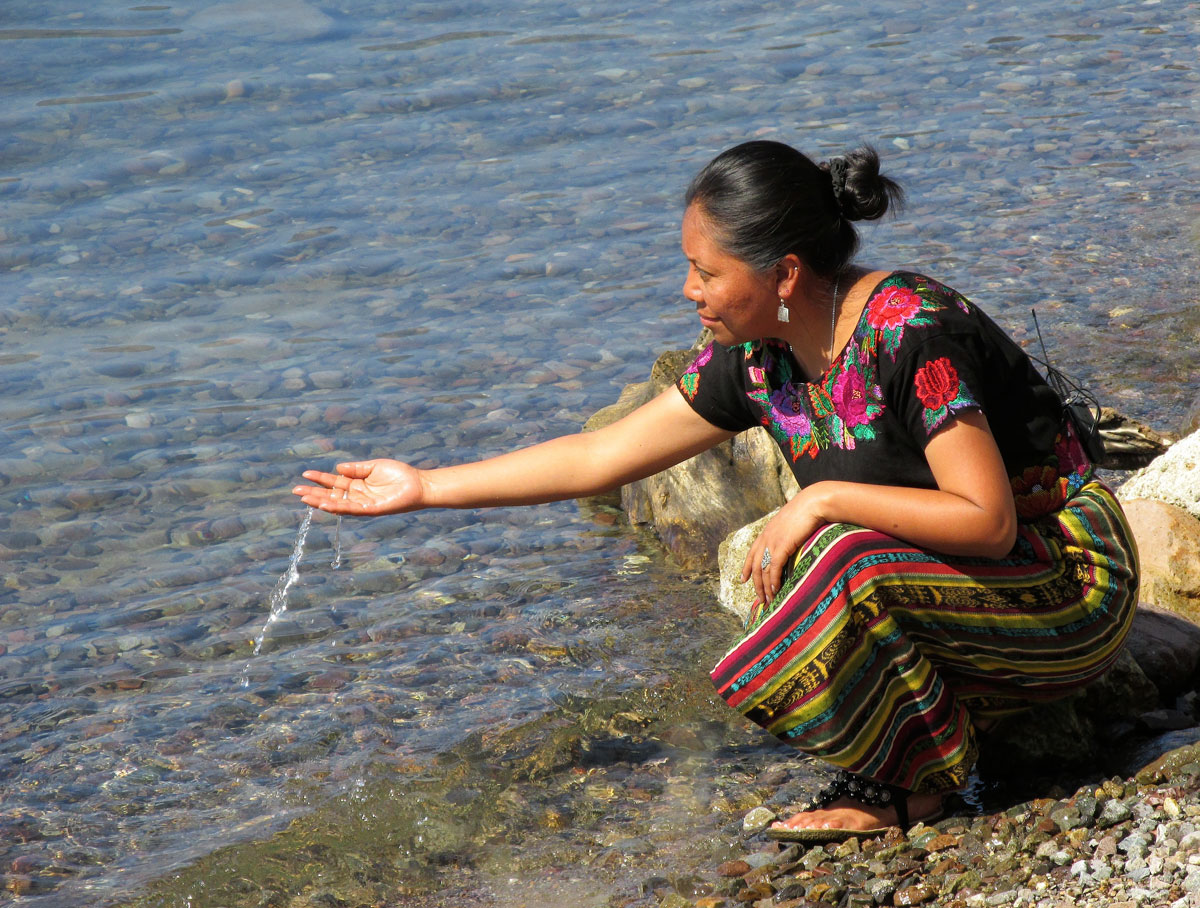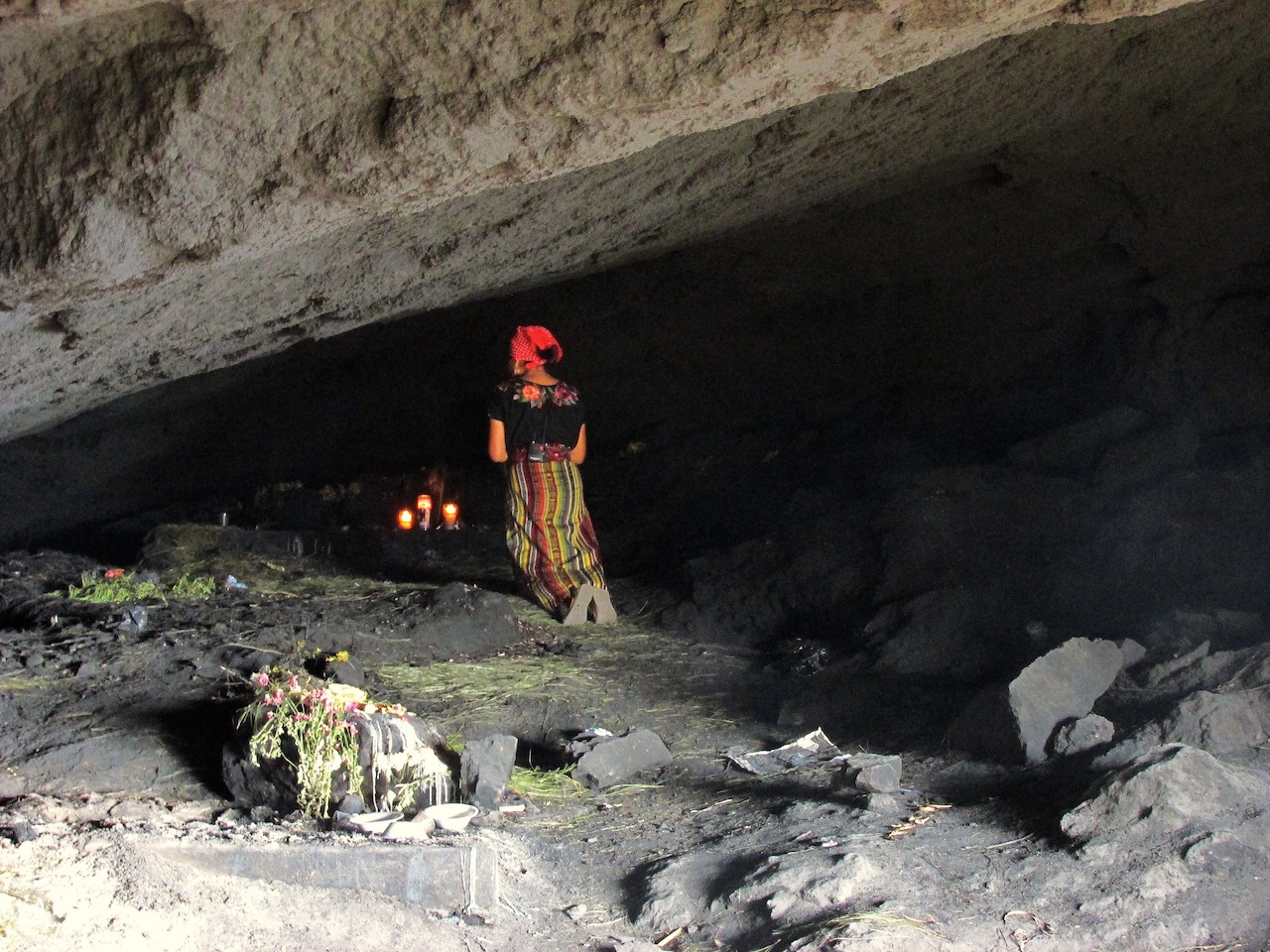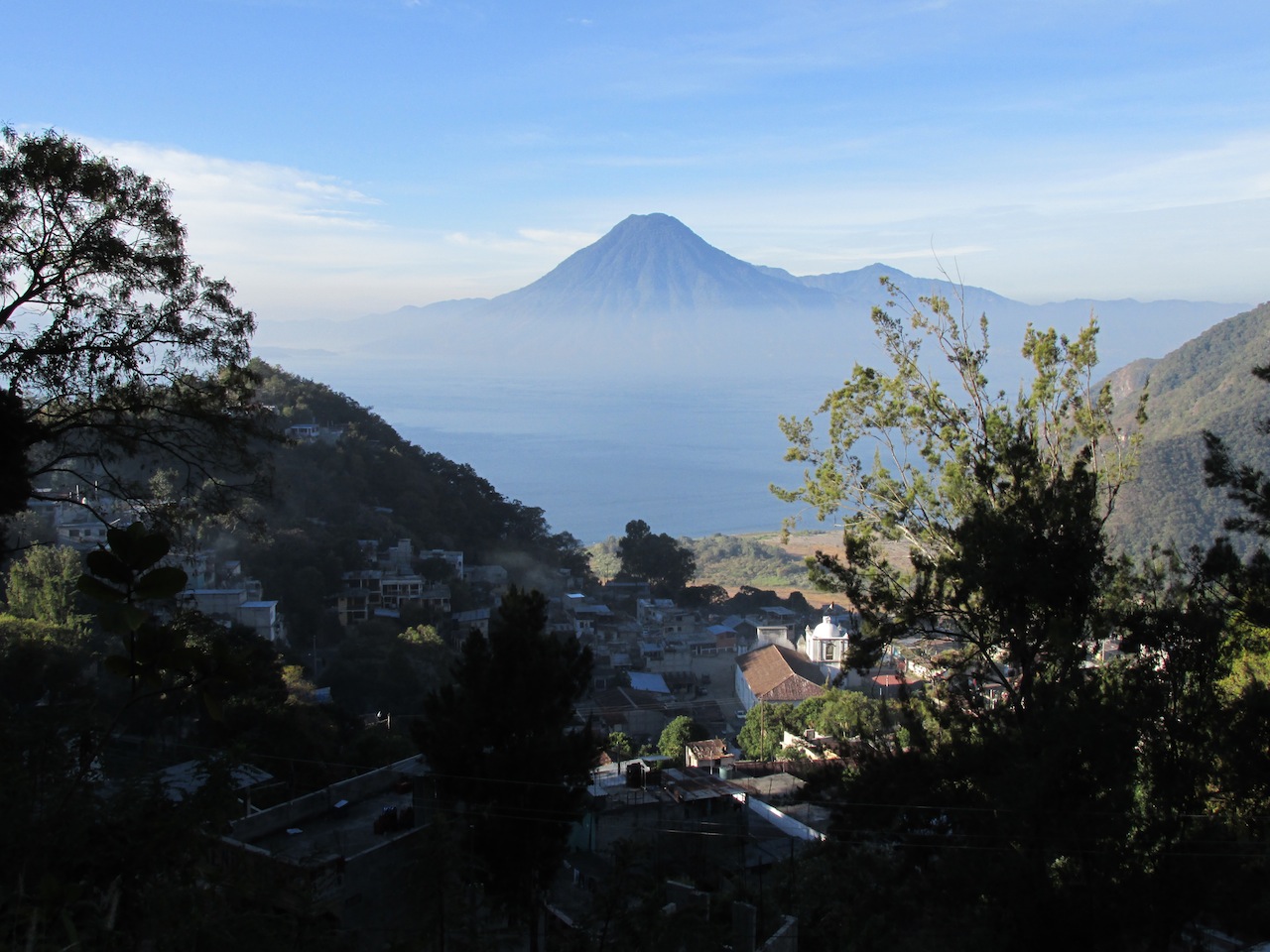Maya Kachiquel
María Procopio Pecher Speaks
* As with all other articles on the Tomorrow’s Ancestors Speak video pages, this article is meant only as an accompaniment to the video message containing the speakers’ main ideas.
Confident, compassionate, and driven to co-create a more conscious and caring world – these are the qualities that immediately come to mind when I think about our Guatemalan encounter with María Procopio Pecher. Born in San Lucas Toliman, a Sololá municipality nestled amidst the southern coast of Lake Atitlán, María was raised within her family tradition of Maya Kachiquel. According to María, the philosophy given by this tradition emphases that humans are compliments of nature and as such they need to respect both themselves and nature so that a life in harmony can be achieved. As part of being respectful with ourselves, the philosophy places great importance on knowing and honoring the mission that we have been given by the Mayan Cosmovisión through the day of our birth.
This mission is intimately associated with the Nahual, or spirit of one’s birthdate. In the Mayan Tzolk’in calendar there are 13 variations to each one of these 20 characters that have a spirit representing each one. María’s own Nahual is Kej, which represents the deer and the strength, agility, and balance of all of the four-legged animals. This day also represents the four pillars that hold heaven and Earth, as well as the authority that comes with this maintenance of harmony between the 4 cardinal points. A day for focusing on one’s people and community, this sign is one of excellence for in-depth investigation and grand advice, as well as equilibrium with the elements. Spending time with María and listening to her life’s work, it is apparent that she has been honoring the force behind her date of birth.
A significant part of María’s life mission has been the defense of nature and human rights – especially the rights of those whom María feels are the most unprotected members of society – indigenous elders, women and children. She is currently working with an organization that utilizes television and radio mediums to speak about the rights of the Water, rights of indigenous women, violence against women, rights of the elderly, and education. The program also concentrates on preventing bullying in the school system, as bullying can be a great hindrance to one’s internal growth. All of the programs are delivered in the language of the region receiving the information, with María’s programs being offered in both Tz’utujil and Kachequel.
María has also spent her life as a teacher of primary education, an investigator into the internal war of Guatemala, and a volunteer rescuer. As part of a group of volunteers called, ‘the rescue brigade,’ María helps conduct search and rescue missions and provide first aid in areas where hospitals are not available. María remarks that although there is no monetary gain in volunteer work, her soul receives great satisfaction in being able to serve those in need. Finally, María has worked closely with an association of midwives in order to maintain their important work that is now often combined with the work of a medic. Maria feels that this collaboration between midwives and medics is a great union and creator of balance as women can now receive the benefits from working with a midwife, and also be secure in the case of complicated births.
With respect to nature, María’s elders tell how much of the environmental issues being faced today are truly illnesses that have been manifesting for years. Just as someone who does not treat an illness eventually produces symptoms as a reaction to the accumulation of problems, so too do different aspects of Nature. In the case of Lake Atitlán, María tells of how the lake has been contaminated with cyanobacteria and other pollutants as a result of improperly treated raw sewage entering the lake. These contaminants often appear from hotels and wealthy shore-side residents, as well as from agricultural pollution in the surrounding regions. The result has been massive fish die-offs, as well as human and other wildlife illnesses.
Additionally, Lake Atitlán’s water level has been rising significantly and engulfing many shore-side buildings – doing what Maria describes as, “the lake taking its land back”. One of the strongest supported hypotheses for this rise involves a relationship between increased sedimentation from deforestation, landslides, and agriculture, and the interaction between lake water and groundwater. The sedimentation prevents the lake’s water from draining through the fractures at the base of the caldera and into the aquifers below. Viewing the numerous structures barely peaking their roofs from the water’s surface as we traversed its beauteous face, it is apparent that the lake is in much need of increased defense and respect.
This notion of respect is one of the three values that María bases her life upon and to which her conversations frequently returned to. The other two principles are to value and coexist with the elements that surround us. She personally feels that humanity’s greatest responsibility is to be grateful of life, health, and everything that surrounds us. María comments, “I will die satisfied to know that I put my grain of corn to defend Mother Nature, to defend the lake, and to defend the environment that is around and in us.” Maria feels that one of her greatest successes is to be herself, to be a woman, a mother, a friend, and a volunteer in service to others. When asked of her greatest triumph in life, María states, “to have three daughters and to be a professional with a human consciousness that is marked by the defense of the Mother Earth and the environment.”
With this I ask you, what is your greatest triumph in life? Are you doing all that you can to respect yourself, others, and Mother Nature? These are good questions for us all to consider as we embark on our quest for a healthier and more harmonious Earthling reality. May gratitude fill our hearts along every step of this great collaborative quest.







